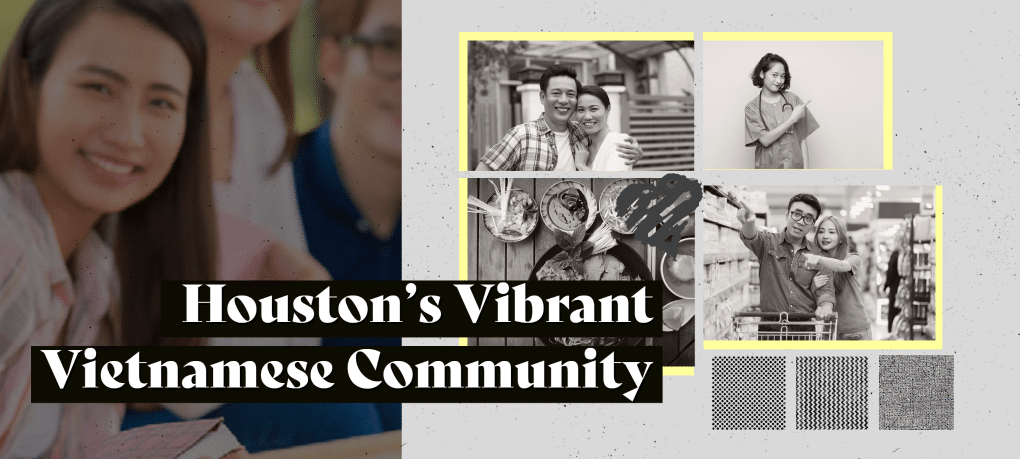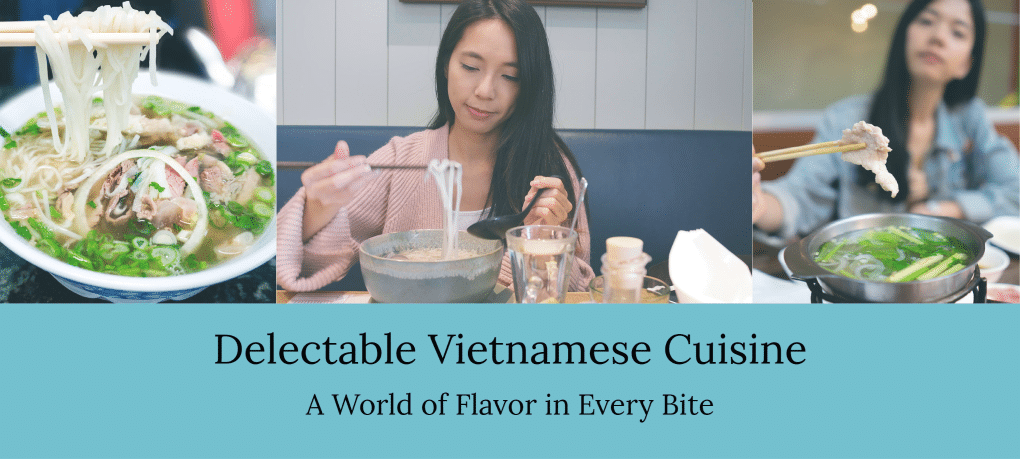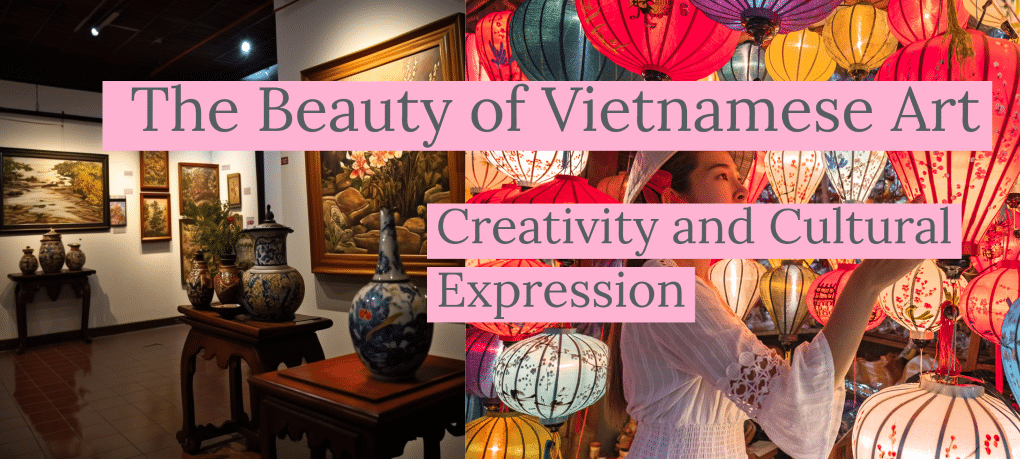
Get ready to learn about one of Houston’s most vibrant communities! Houston boasts one of the largest Vietnamese populations in the United States. Since the end of the Vietnam War in 1975, Vietnamese refugees and immigrants have made Houston their home, enriching the city’s culture, language, cuisine, and traditions. In this article, we’ll dive into the fascinating history, demographics, and contributions of Houston’s Vietnamese community.
Vietnamese Culture: Vietnamese culture is a fascinating tapestry of influences from different parts of the world. With a unique blend of indigenous, Chinese, French, and American elements, it’s no wonder that it reflects the rich history, geography, and diversity of Vietnam and its people. From the language to the art, and everything in between, Vietnamese culture is truly one of a kind.
Vietnamese Language: The Vietnamese language is a tonal language that’s part of the Austroasiatic language family. It’s got six tones that change the meaning of words depending on how they’re pronounced. Plus, it’s got a complex system of pronouns that show respect, relationship, and status. Fun fact: the Vietnamese language uses a Latin-based alphabet that was introduced by French missionaries in the 17th century. And it’s got a bunch of words borrowed from Chinese, French, and English.
Vietnamese Religion: The Vietnamese people practice a variety of religions, including Buddhism, Catholicism, Protestantism, Islam, Hinduism, and Cao Dai. However, the most influential religion is folk religion, which mixes animism, ancestor worship, Confucianism, Taoism, and folk Christianity. It involves rituals, festivals, offerings, and prayers to honor various gods, spirits, ancestors, and saints. Some of the most important folk festivals are Tet (Vietnamese New Year), Vu Lan (Ghost Festival), and Trung Thu (Mid-Autumn Festival).
Vietnamese Cuisine: Vietnamese cuisine is renowned for its diverse and delectable flavors, influenced by Chinese, French, Thai, Indian, and Cambodian cuisines. The use of fresh herbs, spices, fish sauce, rice, noodles, meats, seafood, and vegetables is what gives Vietnamese cuisine its unique character. Popular dishes include pho (noodle soup), banh mi (sandwich), spring rolls, bun bo hue (spicy beef noodle soup), banh xeo (crispy pancake), and ca phe sua da (iced coffee with condensed milk).
Vietnamese art: Vietnamese art is an expression of the people’s creativity, identity, and history. It comes in various forms such as painting, sculpture, pottery, lacquerware, embroidery, silk painting, calligraphy, literature, music, dance, theater, and cinema. Famous Vietnamese artists include Nguyen Gia Tri (lacquer painting), Le Quoc Loc (propaganda art), Nguyen Tu Nghiem (modern art), Tran Van Can (realism), Nguyen Dinh Chien (ceramics), Ho Xuan Huong (poetry), Nguyen Du (literature), Trinh Cong Son (music), Le Vuong (dance), and Tran Anh Hung (film).
To preserve and promote Vietnamese heritage, the community in Houston has established cultural organizations such as the Vietnamese Civic Center, Vietnamese Culture and Science Association, and Vietnamese Community of Houston and Vicinities. These organizations provide social services, cultural events, and educational programs, promoting excellence in leadership, skills development, and civic participation. Their flagship programs include language classes, health fairs, citizenship workshops, youth leadership development camps, youth excellence recognition, cultural festivals, art exhibitions, and concerts.

Three Waves of Vietnamese Immigration to Houston
Houston’s Vietnamese community has a rich history shaped by three distinct waves of immigration. The first wave occurred after the fall of Saigon in 1975, when thousands of Vietnamese refugees with affiliations to the South Vietnamese government fled the communist regime. The second wave followed in the late 1970s and early 1980s, when more than one million “boat people” escaped Vietnam in overcrowded and dangerous vessels. Finally, the third wave arrived in the late 1980s and early 1990s, when the United States implemented programs to allow former political prisoners, Amerasians, and other eligible groups to emigrate from Vietnam.
Houston’s Vibrant Vietnamese Community
Did you know that Houston is home to one of the largest Vietnamese American communities in the United States? According to the 2010 U.S. Census, there were about 85,000 Vietnamese Americans living in Houston, but the number could be as high as 150,000, as some immigrants may not be officially counted.
The majority of the Vietnamese community in Houston resides in southwest Houston, particularly along Bellaire Boulevard, which is affectionately known as “Little Saigon” or “Asiatown.” This area is brimming with Vietnamese-owned businesses, restaurants, markets, and cultural centers, making it a hub of activity and a must-visit destination.
The first wave of Vietnamese immigration to Houston occurred after the fall of Saigon in 1975. Many of these refugees were well-educated and received assistance from charitable and religious organizations to help them find housing, jobs, education, and healthcare.
The second wave of Vietnamese immigration took place in the late 1970s and early 1980s when over a million “boat people” fled Vietnam by sea in dangerous and overcrowded vessels. These refugees faced more challenges and discrimination than the first wave but also demonstrated more resilience and entrepreneurship.
The third wave of Vietnamese immigration occurred in the late 1980s and early 1990s, allowing more diverse groups to emigrate from Vietnam, including former political prisoners, Amerasians, and others.
Since then, Vietnamese immigration to Houston has continued at a steady pace, bringing new families seeking better opportunities and quality of life. The Vietnamese community has also become more diverse in terms of socioeconomic status, education level, occupation, political affiliation, and cultural assimilation. Some have achieved remarkable success in various fields such as business, education, medicine, law, politics, and entertainment. Others have faced difficulties such as poverty, unemployment, language barriers, discrimination, and crime.

Little Saigon, Houston’s Vietnamese Hub
According to the 2010 U.S. Census, Houston is home to approximately 85,000 Vietnamese Americans, with some estimates suggesting that number may be as high as 150,000. Most of Houston’s Vietnamese residents live in southwest Houston, especially along the bustling Bellaire Boulevard. Here, you’ll find a diverse range of Vietnamese-owned businesses, including restaurants, markets, and cultural centers. This vibrant area is commonly referred to as “Little Saigon” or “Asiatown” and is a must-see destination for anyone who wants to explore Vietnamese culture in Houston.
Diverse Contributions of Houston’s Vietnamese Community
Houston’s Vietnamese community has made significant contributions to the city’s culture and economy. Vietnamese cuisine, for example, has become a beloved staple in Houston’s culinary scene, with countless Vietnamese-owned restaurants showcasing the best of Vietnamese cuisine. Additionally, the Vietnamese community has had an impact on Houston’s economy through entrepreneurship, with many Vietnamese business owners opening successful ventures in a variety of industries.
Vietnamese Culture in Houston
The Vietnamese culture is a fascinating blend of indigenous, Chinese, French, and American influences. The Vietnamese language, for example, is a tonal language with a complex system of pronouns that indicate respect, relationship, and status. Vietnamese religion is similarly diverse, with Buddhism, Catholicism, Protestantism, Islam, Hinduism, and Cao Dai all practiced in Vietnam. Folk religion, a blend of various belief systems, is the most common and influential religion in Vietnamese culture.
Vietnamese Cultural Organizations: In Houston, the Vietnamese community has created a number of cultural organizations to preserve and promote their heritage while also providing social services and support to their members. Some of these organizations are:
- Vietnamese Civic Center: The Vietnamese Civic Center (VNCC) was founded in 1990 to merge and accommodate the nonprofit, charitable needs for cultural, social, and educational enrichment and advancement of the Vietnamese Americans in Houston and its vicinity. This multipurpose facility hosts a variety of events and activities such as language classes, health fairs, citizenship workshops, voter registration drives, cultural festivals, art exhibitions, and concerts.
- Vietnamese Culture and Science Association: The Vietnamese Culture and Science Association (VCSA) was founded in 1990 to promote excellence in education, leadership, and skills development through culture and science. The VCSA organizes several flagship programs such as Camp Len Duong (Youth Leadership Development Camp), Ve Vang Dan Viet (Youth Excellence Recognition), Viet Cultural Festival, Community Health, and Community Art. The VCSA encourages multi-generational and cross-cultural collaborations and fosters civic participation in the mainstream and Vietnamese America and Canada.
- Vietnamese Community of Houston and Vicinities: The Vietnamese Community of Houston and Vicinities (VNCH) is a not-for-profit community organization that represents and serves the approximately 150,000 Vietnamese Americans in the Greater Houston area. The VNCH’s aim is to preserve and promote the Vietnamese culture, language, and traditions while protecting the rights and interests of the Vietnamese Americans. The VNCH also coordinates with other local, state, and national organizations to address issues affecting the Vietnamese community such as education, health, immigration, and social welfare.
- These cultural organizations play an essential role in maintaining and promoting Vietnamese culture and heritage in Houston. They offer a range of activities and services, from language classes to cultural festivals, that bring the Vietnamese community together and provide support and resources to those in need. They also foster understanding and appreciation of Vietnamese culture among the wider Houston community, promoting cross-cultural awareness and dialogue. If you’re interested in learning more about Vietnamese culture, or if you’re a member of the Vietnamese community in Houston looking for resources and support, these organizations are an excellent place to start.
Vietnamese Festivals in Houston
The Vietnamese community in Houston knows how to celebrate their culture and heritage with style. With numerous festivals throughout the year, you’ll have plenty of opportunities to immerse yourself in the traditional food, music, dance, and games that make their culture unique. Plus, it’s a great way to show gratitude, respect, and solidarity with family, friends, and neighbors. Here are some of the most popular festivals that you don’t want to miss:
- Tet: This is the ultimate party for the Vietnamese community in Houston. Marking the first day of the lunar calendar, Tet falls in late January or early February and represents new beginnings, hope, and prosperity. You’ll be mesmerized by the colorful decorations, flowers, fruits, and red banners. Plus, you can wear new clothes, visit temples, offer prayers, pay respects to ancestors, exchange gifts, and wish each other happiness and luck. Trust us; it’s an experience you won’t forget.
- Vu Lan: The Ghost Festival honors one’s parents, especially mothers, and the wandering souls who have no relatives or descendants to care for them. The 15th day of the seventh lunar month, which falls in August or September, is the perfect time to show compassion. People wear roses on their chests – red for living mothers and white for deceased mothers – offer food, incense, and paper money to their ancestors and the hungry ghosts, listen to Buddhist teachings, and perform acts of charity. It’s a heartwarming event that emphasizes the importance of family and community.
- Trung Thu: The Mid-Autumn Festival is a time to celebrate the harvest, the full moon, and the reunion of family and friends. The 15th day of the eighth lunar month, which falls in September or October, is a magical time when the whole community comes together to eat mooncakes, light lanterns, watch lion dances, and enjoy cultural performances. The Viet Cultural Fest is an annual event in Houston that showcases the Vietnamese culture, food, and entertainment during Trung Thu. Don’t miss out on the fun!
Exploring Vietnamese Markets and Neighborhoods in Houston
The Vietnamese community in Houston has created markets and neighborhoods that truly reflect their culture, lifestyle, and economic activities. These places are more than just places to buy goods and services; they’re also hubs of social interaction and cultural exchange. Here are some of the places you should check out:
- Viet Hoa International Foods: Viet Hoa is the ultimate destination for Vietnamese cooking. It’s been around for decades and has everything you need for your culinary adventures, including fresh produce, seafood, meat, dry goods, spices, sauces, snacks, drinks, and prepared foods. The food court serves various Vietnamese dishes such as pho, banh mi, spring rolls, and bun bo hue, making it the perfect place for a quick lunch. You’ll find Viet Hoa on West Sam Houston Parkway South in southwest Houston.
- Asian Market: If you’re looking for a fun and family-friendly way to experience the diversity and richness of Asian culture in Houston, then you should check out the Asian Market. This monthly event promotes Asian food, dance, music, and art at various locations in Houston. You can try authentic cuisine from different Asian countries such as Vietnam, China, Korea, Japan, Thailand, India, and more. Plus, there are cultural performances such as lion dances, martial arts, Bollywood dances, and karaoke. It’s a fantastic way to explore and learn about the different cultures in Houston.
- Little Saigon: Little Saigon is the heart of Houston’s Vietnamese community, and it’s easy to see why. The area along Bellaire Boulevard between Beltway 8 and Highway 6 in southwest Houston is filled with Vietnamese businesses such as restaurants, cafes, bakeries, markets, pharmacies, jewelry stores, tailors, beauty salons, and travel agencies. You can also find several cultural landmarks such as the Vietnamese Civic Center, the Vietnamese Culture and Science Association, the Vietnam War Memorial, and the Teo Chew Temple. Little Saigon is a lively and colorful place to visit, shop, eat, and learn about the Vietnamese culture. It’s a must-visit destination for anyone who wants to experience the best of Houston’s Vietnamese community.
Frequently Asked Questions
The first wave of Vietnamese migration to Houston occurred after the fall of Saigon on April 30, 1975.
A large concentration of Vietnamese-owned businesses can be found along Bellaire Boulevard in southwest Houston, which is commonly referred to as “Little Saigon” or “Asiatown.”
Vietnamese religious practices include Buddhism, Catholicism, Protestantism, Islam, Hinduism, and Cao Dai, as well as folk religion, which is a blend of various belief systems.
The Vietnamese community has contributed to Houston’s economy through entrepreneurship, with many Vietnamese business owners opening successful ventures in a variety of industries.
Some of the cultural organizations established by the Vietnamese community in Houston include the Vietnamese Civic Center, Vietnamese Culture and Science Association, and Vietnamese Community of Houston and Vicinities.
Vietnamese immigration to Houston has occurred in three waves, with the first wave occurring after the fall of Saigon in 1975, the second wave in the late 1970s and early 1980s, and the third wave in the late 1980s and early 1990s.
Vietnamese cuisine has become a beloved staple in Houston’s culinary scene, with countless Vietnamese-owned restaurants showcasing the best of Vietnamese cuisine.
Vietnamese art forms include painting, sculpture, pottery, lacquerware, embroidery, silk painting, calligraphy, literature, music, dance, theater, and cinema.
What is the Vietnamese language like?
The Vietnamese language is a tonal language with a complex system of pronouns that indicate respect, relationship, and status. It also uses a Latin-based alphabet that was introduced by French missionaries in the 17th century.
Houston is the largest city in the United States with a large number of Vietnamese residents.
Other minority groups that have made significant contributions to Houston’s culture and economy include African Americans, Latinos, and Asians.
The museum district in Houston is an area of the city that is home to many of the city’s major museums and cultural institutions.
North Vietnam is located in the northern part of Vietnam, bordering China.
April 30, 1975, is the date that marked the end of the Vietnam War and the beginning of a wave of Vietnamese migration to the United States.
Some famous Vietnamese artists include Nguyen Gia Tri (lacquer painting), Le Quoc Loc (propaganda art), Nguyen Tu Nghiem (modern art), Tran Van Can (realism), Nguyen Dinh Chien (ceramics), Ho Xuan Huong (poetry), Nguyen Du (literature), Trinh Cong Son (music), Le Vuong (dance), and Tran Anh Hung (film).
Connecting with 24 Hour Translation Services
Houston’s diverse Vietnamese community and their contributions to the city’s culture and economy are undeniable. As Houston’s Vietnamese population continues to grow, so does the demand for language and translation services. 24 Hour Translation Services is proud to provide professional Vietnamese translation services to Houston and the surrounding areas. With expert translators specializing in a variety of industries, our team is dedicated to bridging linguistic gaps and promoting better communication within Houston’s multicultural landscape. For more information on our services, visit 24 Hour Translation Services.
